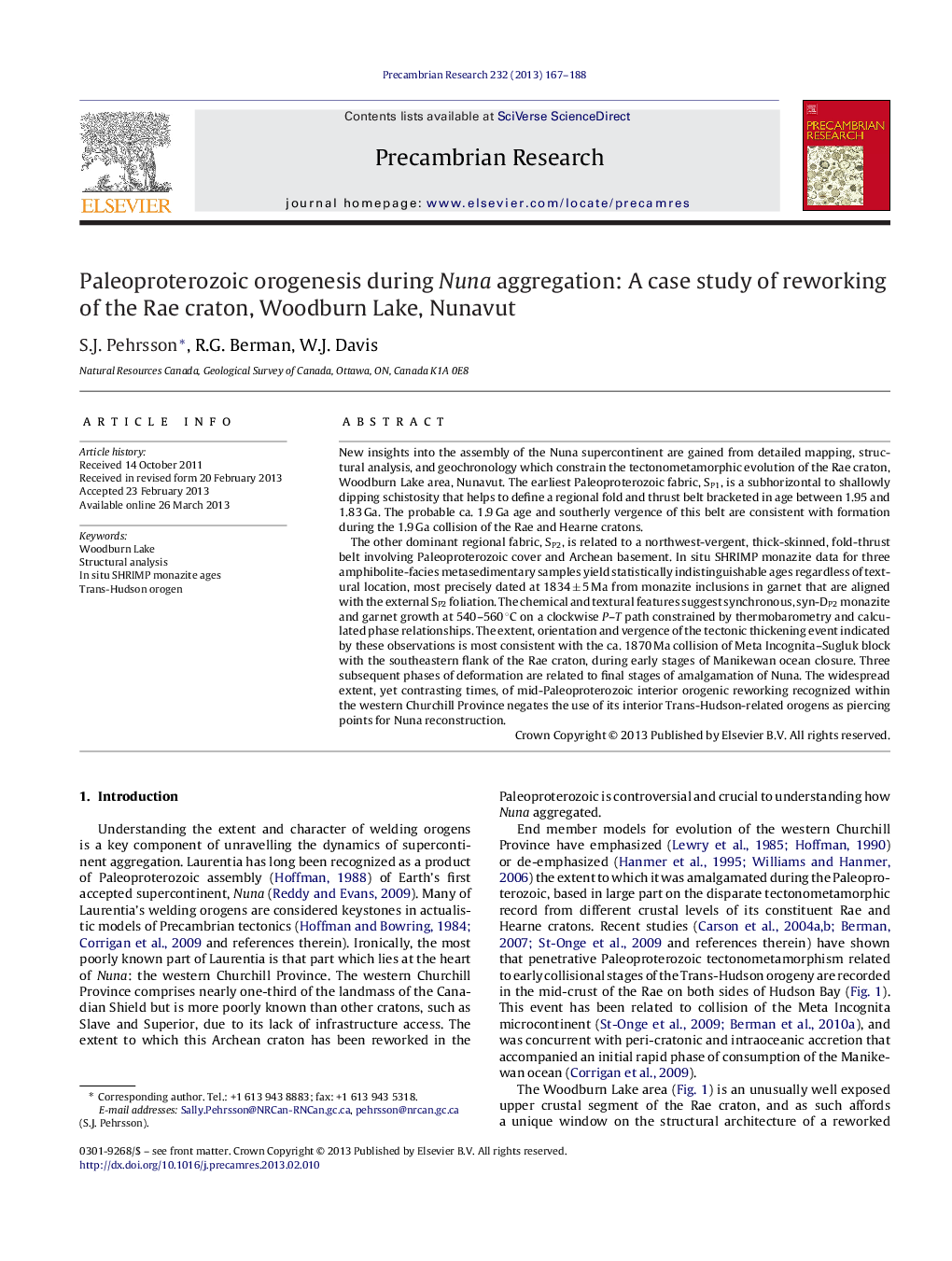| Article ID | Journal | Published Year | Pages | File Type |
|---|---|---|---|---|
| 4723119 | Precambrian Research | 2013 | 22 Pages |
•First thick-skinned Paleoproterozoic fold and thrust belt in mainland Rae craton.•First P–T and in situ SHRIMP monazite ages establishing nature and timing of D2 event.•D1 and D2 linked to early Hudsonian accretionary events during Nuna aggregation.•Extent of WC deformation negates use of interior THO orogens as piercing points.
New insights into the assembly of the Nuna supercontinent are gained from detailed mapping, structural analysis, and geochronology which constrain the tectonometamorphic evolution of the Rae craton, Woodburn Lake area, Nunavut. The earliest Paleoproterozoic fabric, SP1, is a subhorizontal to shallowly dipping schistosity that helps to define a regional fold and thrust belt bracketed in age between 1.95 and 1.83 Ga. The probable ca. 1.9 Ga age and southerly vergence of this belt are consistent with formation during the 1.9 Ga collision of the Rae and Hearne cratons.The other dominant regional fabric, SP2, is related to a northwest-vergent, thick-skinned, fold-thrust belt involving Paleoproterozoic cover and Archean basement. In situ SHRIMP monazite data for three amphibolite-facies metasedimentary samples yield statistically indistinguishable ages regardless of textural location, most precisely dated at 1834 ± 5 Ma from monazite inclusions in garnet that are aligned with the external SP2 foliation. The chemical and textural features suggest synchronous, syn-DP2 monazite and garnet growth at 540–560 °C on a clockwise P–T path constrained by thermobarometry and calculated phase relationships. The extent, orientation and vergence of the tectonic thickening event indicated by these observations is most consistent with the ca. 1870 Ma collision of Meta Incognita–Sugluk block with the southeastern flank of the Rae craton, during early stages of Manikewan ocean closure. Three subsequent phases of deformation are related to final stages of amalgamation of Nuna. The widespread extent, yet contrasting times, of mid-Paleoproterozoic interior orogenic reworking recognized within the western Churchill Province negates the use of its interior Trans-Hudson-related orogens as piercing points for Nuna reconstruction.
